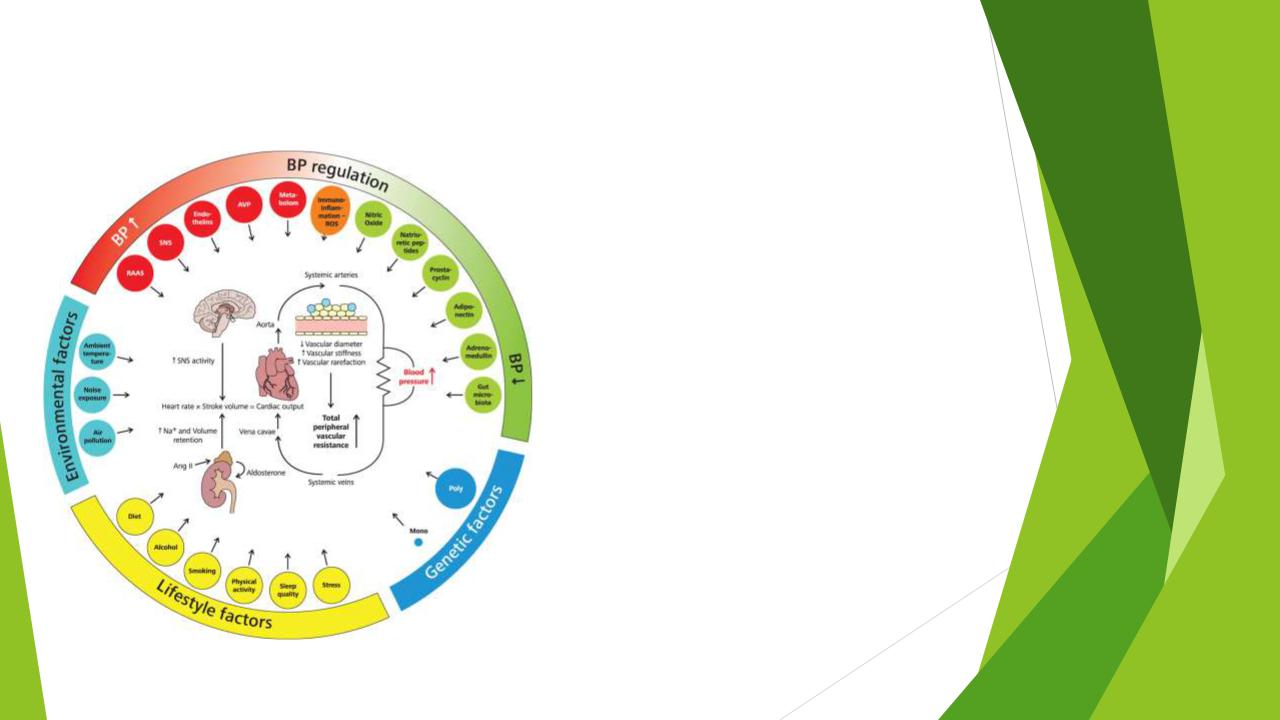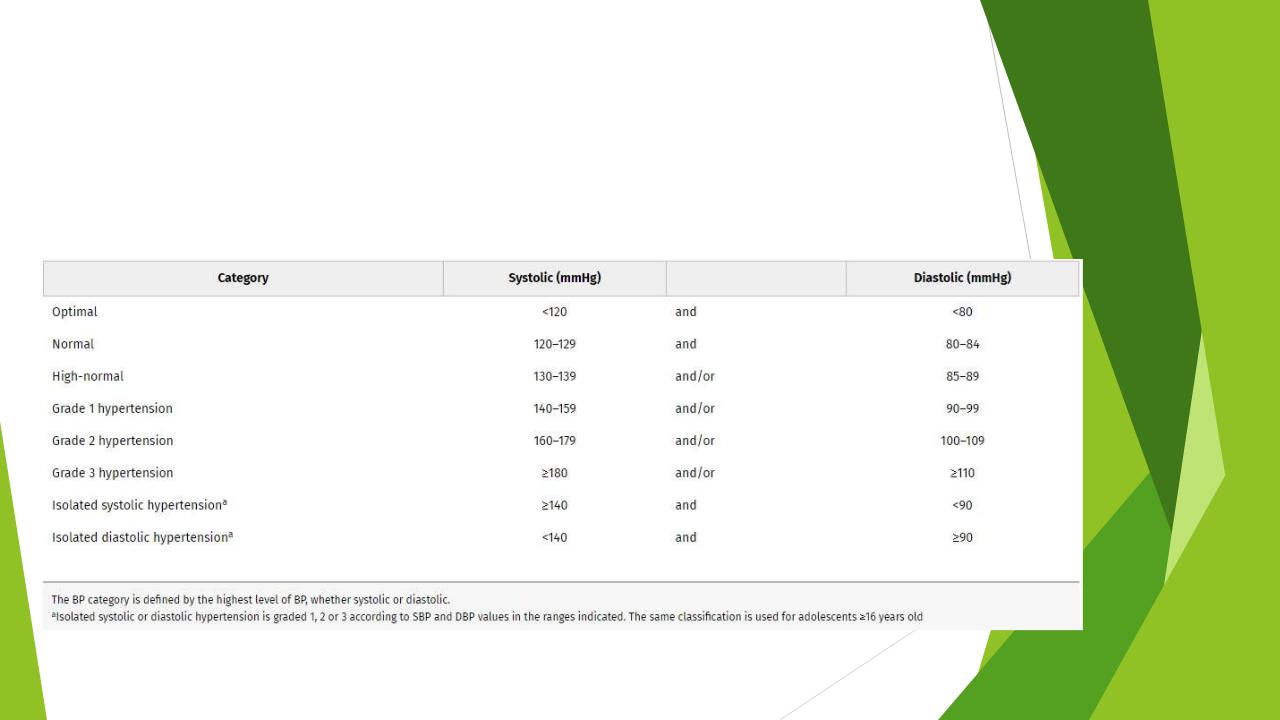
Lesson topic №21 Синдром артериальной гипертензии (Arterial hypertension in the outpatient setting) (1)
.pdf
Arterial hypertension in the outpatient setting
Gerasimenko I.A. Department of polyclinic therapy with course of general medical practice (family medicine)

Prevalence of hypertension
Hypertension is the most prevalent cardiovascular disease disorder in the world and according to the WHO, it affects 1.28 billion adults aged 30–79 years worldwide
Two-thirds living in low-income and middle-income countries.
Prevalence of hypertension in adults aged 30–79 years: 34% in men and 32% in women.
At younger ages (<50 years), hypertension is more prevalent in men, whereas a steeper increase of SBP in women from their third decade (and more so following menopause) makes the prevalence of hypertension greater in women in older age categories (>65 years)
SBP increases progressively with age while DBP rises only until the age of 50– 60 years, followed by a short period of stagnation and a subsequent mild decrease. This results in an increase of pulse pressure (difference between SBP and DBP) with age.

Blood pressure relationship with risk of cerebral, cardiovascular and kidney events
There is a continuous relationship between the increase in BP and the risk of stroke, coronary or ischemic heart disease (CAD), heart failure (HF) and development and progression of chronic kidney disease (CKD).
This applies to all ages and ethnic groups.
For each 20 mmHg elevation of office SBP or 10 mmHg elevation of office DBP, the risk for fatal CAD or stroke doubled.
SBP is a better predictor of events than DBP after the age of 50 years.
Elevated DBP is associated with increased risk in young individuals, more recent studies indicate increased risk of CV events for both SBP and DBP elevations in younger adults.

HYPERTENSION PATHOPHYSIOLOGY
Hypertension is divided into a primary (‘essential’) and secondary forms. Secondary hypertension originates from specific causes and can be detected in only a small fraction of hypertensive patients. Primary hypertension covers the remaining large fraction of the hypertensive population, and its origin depends on the complex interaction between a genetic background, a large number of environmental factors and the aging process.

Definition of hypertension
Hypertension is defined based on repeated office SBP values ≥140 mmHg and/or DBP ≥90 mmHg

Classification of hypertension

Classification of hypertension
In addition to grades of hypertension, which are based on BP values, we also distinguish stages of hypertension as follows:
Stage 1: Uncomplicated hypertension (i.e. without hypertensionmediated organ damage (HMOD) or established cardiovascular disease (CVD), including chronic kidney disease (CKD) stage 1 and 2).
Stage 2: Presence of HMOD or CKD grade 3 or diabetes.
Stage 3: Established CVD or CKD stages 4 or 5.

Hypertension and total cardiovascular risk assessment
Hypertension is often associated with other risk factors, including dyslipidemia, impaired glucose tolerance and type 2 diabetes, which further increase of CV risk.

Factors that influence CV risk in patients with hypertension
Parameter for risk stratification, which are included in SCORE2 and SCORE2OP
Sex (men >women)
Age
Level of SBP
Smoking – current or past history
Non-HDL cholesterol

Factors that influence CV risk in patients with hypertension
Family or parental history of early onset hypertension
Personal history of malignant hypertension
Family history of premature CVD (men aged <55 years; women aged <65 years)
Heart rate (resting values >80 bpm)
Low birth weight
Sedentary lifestyle
Overweight or Obesity
Diabetes
Uric acid
Lp(a)
Adverse outcomes of pregnancy (recurrent pregnancy loss, preterm delivery, hypertensive disorders, gestational diabetes)
Early-onset menopause
